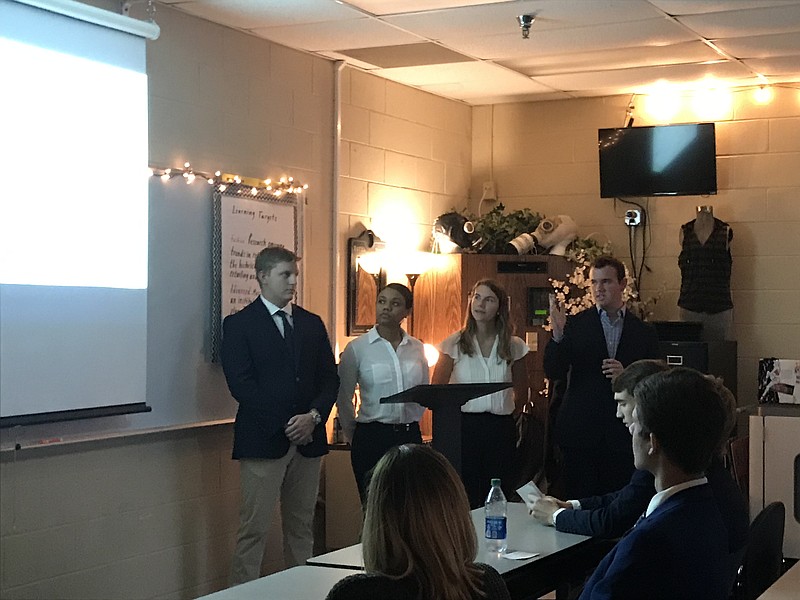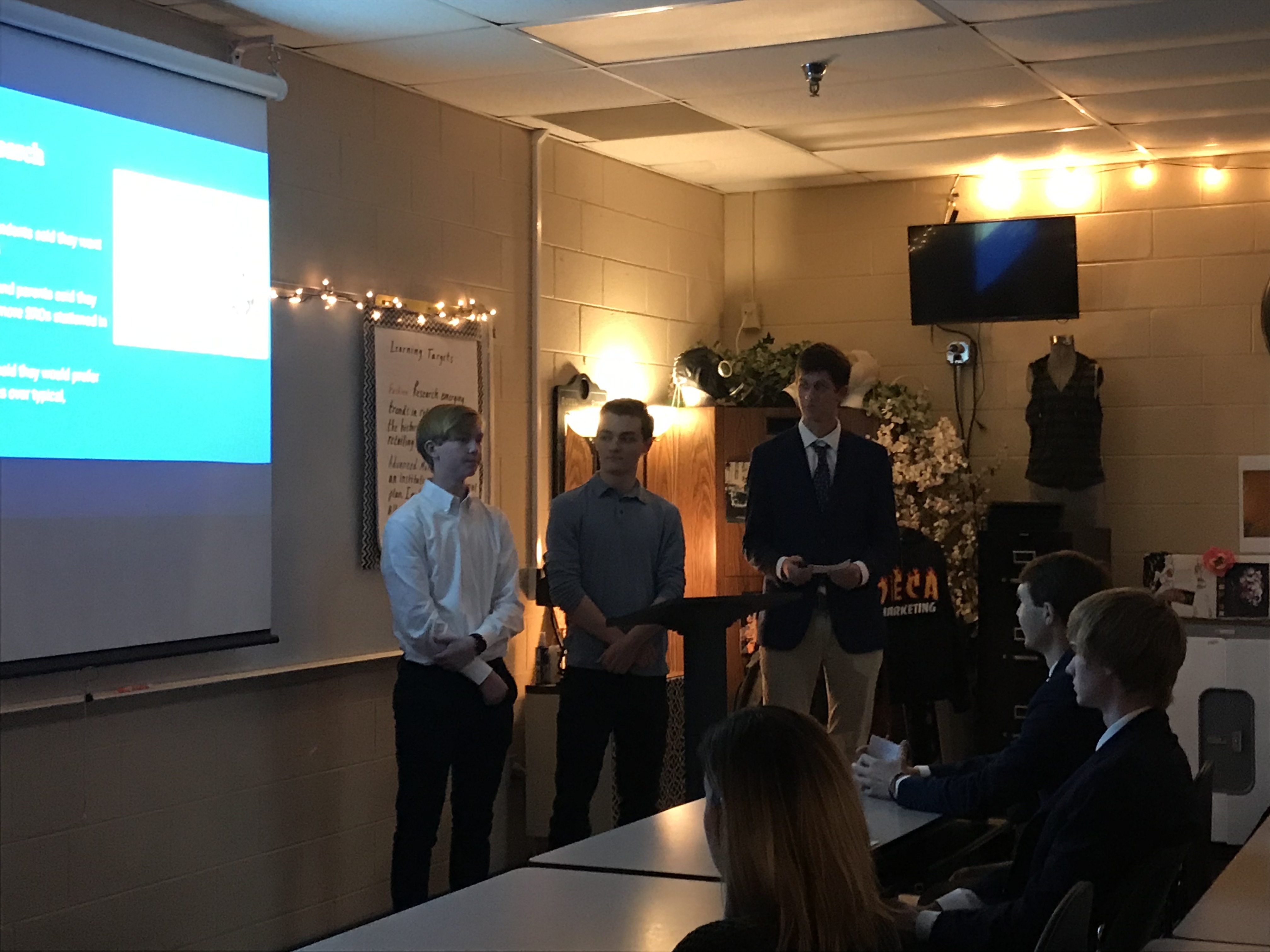Last month, school district officials got some recommendations on how to improve the school-going experience.
The suggestions came from Ooltewah High School seniors in Heather McIntyre's advanced marketing class. The students were asked to design their own school using market research and then present their ideas to local school officials and board members.
Hamilton County Schools Superintendent Bryan Johnson, Director of Maintenance and Operations Justin Witt and District 8 School Board Representative Tucker McClendon listened as the students shared the decisions they would make if they were in charge.
Commonalities included a later start time of 8:15 a.m., with some students quoting studies that show their age group functions better later in the morning.
Improving school lunch - what is served, how it's served and the length of time they have to eat - was also a popular topic. Lunch served buffet style or from separate stations would cut down on lines and give students more time to eat, said one group.
Several groups also mentioned student-to-teacher ratios, with the students' ideal ranging from to 17-20:1. One student commented that Ooltewah High's ratio is supposed to be 19:1 but he has 35 kids in his math class.
Johnson responded that overall, OHS's ratio is probably 19-20:1, but some classes, such as Career and Technical Education and special education, are smaller than others, driving the average down. Also, classes in subjects such as math and science tend to be larger because it can be difficult to find teachers for those subjects, he said.
Other ideas pitched by the students included more career-based electives, a mentorship program connecting freshmen and seniors, and a student council that would make rules and decide on punishments for students who break those rules.
Johnson asked each group about the costs associated with their school plan, along with whether they'd prefer a small school or a larger school with better facilities.
Most of the students said they'd be fine with a large high school, and teachers' questionnaires revealed that they feel the same. But many students said they'd prefer a smaller elementary school. Johnson said smaller schools have lower student-to-teacher ratios, and the students said they think individualized attention is most important at the elementary level.
McIntyre said the school design project is based on a teaching methodology called design thinking, which emphasizes finding creative solutions to problems.
"As a teacher, I wanted to use this process with my students to develop a school that made sense to them," she said. "I wanted to give them authentic learning experiences."
The class's next project involves one of the main complaints students identified when designing their schools: reforming school lunch.
Email Emily Crisman at ecrisman@timesfreepress.com

